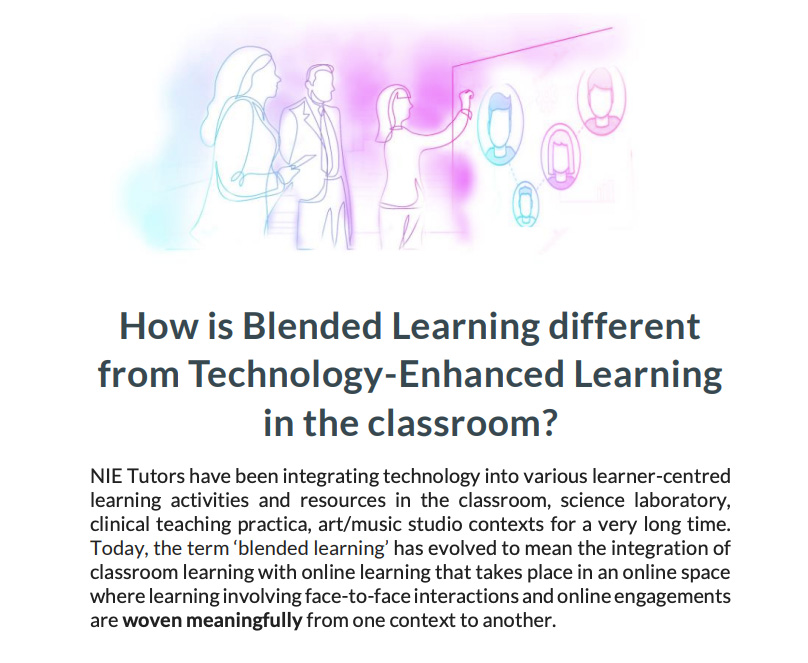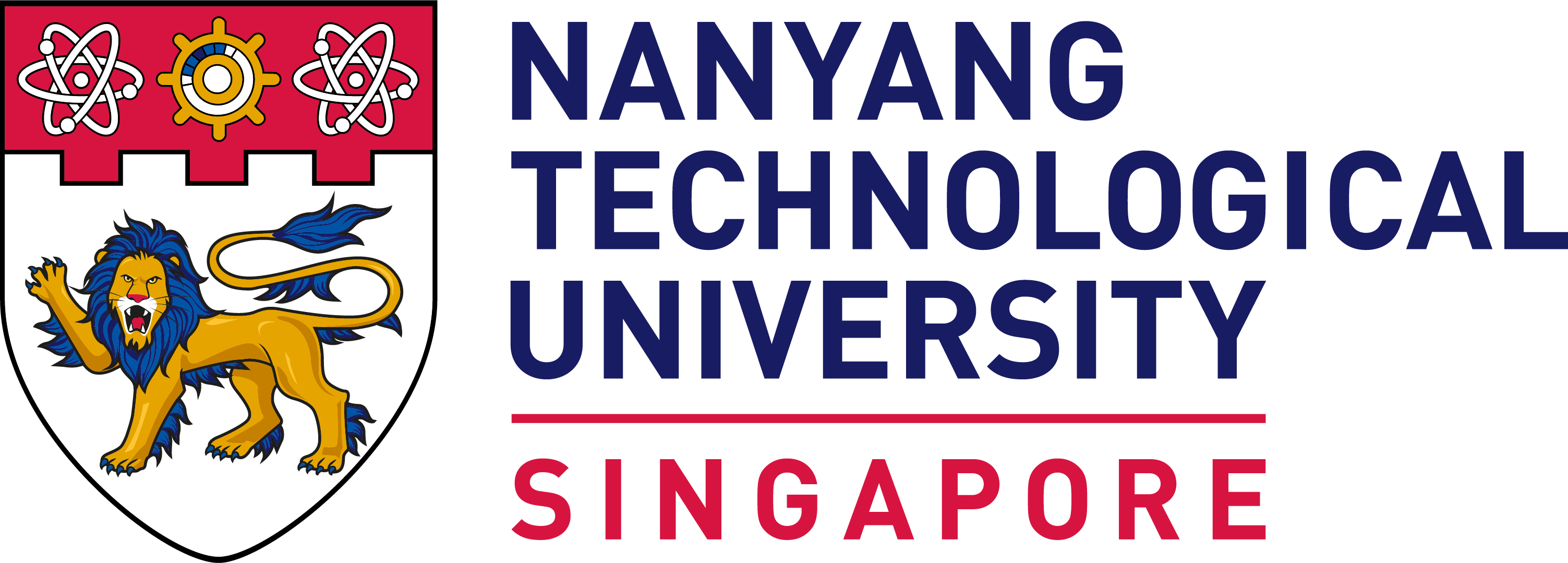Blended Learning@NIE
Blended Learning@NIE isn’t just about mixing online and face-to-face teaching. It’s about designing learning that’s flexible, empowering, and built for the future. With sound pedagogical practices at its core, it gives students greater control over how, when, and where they learn while helping our faculty craft more meaningful, connected learning experiences.
At the Centre for Innovation in Learning, we bring Blended Learning@NIE to life by supporting our faculty with hands-on initiatives like Design Clinics, bite-sized pedagogical tips in our monthly e-newsletter, and real-time sharing through IN-Scape, our vibrant online teaching community on Yammer. Whether it’s co-creating tech-enabled teaching solutions or exploring new ed-tech tools together, we are here to make blended learning more effective, flexible, and impactful with faculty at the center.
Blended Learning in Action: How NIE Faculty Are Making It Work
Curious how our faculty are making blended learning work in real classrooms? Discover how educators across NIE are creatively combining in-person and online strategies to engage students, enhance flexibility, and transform learning.
Click here to explore their stories, ideas, and practical tips straight from the front lines of teaching.
Blended Learning@NIE
Want to see how blended learning can work for you?
Download the Blended Learning@NIE PDF.










References
Alammary, A., Sheard, J., & Carbone, A. (2014). Blended learning in higher education: three different design approaches. Australasian Journal of Educational Technology 30(4), 440-454.
Chen, W. (2020, Aug 19-22). The Blended Learning Model. Keynote speech at the 2020 Global Smart Education Conference. Beijing China. Graham, C. R. (2006). Blended learning systems. In C. J. B. C. R.
Graham (Ed.), The handbook of blended learning: Global perspectives, local designs. San Francisco: Pfeiffer. Johnson, L., Adams Becker, S., Estrada, V., & Freeman, A. (2015). Nmc horizon report: 2015 k-12 edition. Retrieved from http://cdn.nmc.org/media/2015-nmc-horizon-report-k12-EN.pdf
Li, C.-S., & Irby, B. (2008). An overview of online education: Attractiveness, benefits, challenges,concerns and recommendations. College Student Journal, 42(2), 449-458.
O’Byrne, I., W., & Pytash, K. E. (2015). Hybrid and blended learning: Modifying pedagogy across path, pace, time, and place. Journal of Adolescent & Adult Literacy, 59(2), 137-140.
Picciano, A. G., Seaman, J., Shea, P., & Swan, K. (2012). Examining the extent and nature of american k-12 education: The research initiatives of the alfred p. Sloan foundation. . The Internet and Higher Education, 15(2), 127-135.
Powell, A., Watson, J., Oglesby, J., Hibbard, L., Fetzer, L., Horn, M., & Patrick, S. (2015). Inacol blending learning: The evolution of online and face-to-face education from 2008–2015 Retrieved from http://www.inacol.org/wpcontent/ uploads/2015/07/iNACOL_Blended-Learning-The-Evolution-of-OnlineAndFaceto-Face-Education- from-2008-2015.pdf


.png?sfvrsn=a77780ad_1)